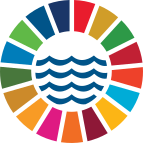Marae Moana – The Cook Islands Journey
Marae Moana - Government of the Cook Islands
(
Government
)
#OceanAction59042
Description
In adopting the Marae Moana Policy, 2016-2020 the Cook Islands became the first country in the Pacific Island region to put into practice a ‘whole of ocean’ approach to marine conservation and management. The next year, the Marae Moana Act 2017 entered into force, reinforcing and institutionalized policy commitments to marine conservation, sustainable ocean governance, integrated planning, transparency, cooperation and inclusiveness. Marae Moana augments – it does not replace- the existing Cook Islands laws and institutions engaged in various aspects of ocean governance. The Act formalizes the Marae Moana council and Technical Advisory Group and their roles and responsibilities. Briefly, the Council is a high-level decision making body chaired by the Prime Minister. The Council is required to consider and approve key outputs such as the Marae Moana Policy, the Outlook report, marine spatial plans and the Marae Moana Annual Report. The Council also monitors the work of the agencies noted in the previous paragraph. The Marae Moana Technical Advisory group comprises of members noted above. The duties of the Technical Advisory group are stated in Sections 15 & 16 of the Act. In summary, the Technical Advisory Group cooperates with the Marae Moana Coordination Office in producing the outputs noted in this policy for approval by the Council.
This voluntary commitment also considers the National Marine spatial plan and the Island marine spatial plan. The geographic scope of the national MSP is the entire exclusive economic zone and continental shelf, noting that it must not include any area within the internal waters or the territorial sea, except where those internal waters or territorial sea fall outside the jurisdiction of any Island Government and are not internal waters or territorial sea of the island of Rarotonga. Island MSP considers Part 3 of the Marae Moana 2017 that makes clear that marine spatial planning is central to achieving the purposes of the Marae Moana. This is going to be an extensive exercise that will pull resources together to support all Island Governments to be able to support their respective Island MSP. Support has been garnered for both initiatives with IUCN and New Zealand Government.
All these entities fall under the Marae Moana Technical Advisory Group, to support the implementation of the Marae Moana Act 2017.
GOVERNMENT
1. Office of the Prime Minister (Marae Moana Coordination Office)
2. National Environment Service (NES)
3. Ministry of Marine Resources (MMR)
4. Seabed Minerals Authority (SBMA)
5. Ministry of Transport (MOT)
6. House of Ariki (Traditional Chiefs)
NON GOVERNMENT ORGANISATIONS
7. Te Ipukarea Society (TIS) – Social NGO
8. Korero o te Orau (KOTO)- Science NGO
SDGS & Targets
Goal 14
Conserve and sustainably use the oceans, seas and marine resources for sustainable development
14.1
By 2025, prevent and significantly reduce marine pollution of all kinds, in particular from land-based activities, including marine debris and nutrient pollution
14.1.1
(a) Index of coastal eutrophication; and (b) plastic debris density
14.2
By 2020, sustainably manage and protect marine and coastal ecosystems to avoid significant adverse impacts, including by strengthening their resilience, and take action for their restoration in order to achieve healthy and productive oceans
14.2.1
Number of countries using ecosystem-based approaches to managing marine areas
14.3
Minimize and address the impacts of ocean acidification, including through enhanced scientific cooperation at all levels
14.3.1
14.4
By 2020, effectively regulate harvesting and end overfishing, illegal, unreported and unregulated fishing and destructive fishing practices and implement science-based management plans, in order to restore fish stocks in the shortest time feasible, at least to levels that can produce maximum sustainable yield as determined by their biological characteristics
14.4.1
14.5
By 2020, conserve at least 10 per cent of coastal and marine areas, consistent with national and international law and based on the best available scientific information
14.5.1
14.6
By 2020, prohibit certain forms of fisheries subsidies which contribute to overcapacity and overfishing, eliminate subsidies that contribute to illegal, unreported and unregulated fishing and refrain from introducing new such subsidies, recognizing that appropriate and effective special and differential treatment for developing and least developed countries should be an integral part of the World Trade Organization fisheries subsidies negotiation
14.6.1
Degree of implementation of international instruments aiming to combat illegal, unreported and unregulated fishing
14.7
By 2030, increase the economic benefits to Small Island developing States and least developed countries from the sustainable use of marine resources, including through sustainable management of fisheries, aquaculture and tourism
14.7.1
Sustainable fisheries as a proportion of GDP in small island developing States, least developed countries and all countries
14.a
Increase scientific knowledge, develop research capacity and transfer marine technology, taking into account the Intergovernmental Oceanographic Commission Criteria and Guidelines on the Transfer of Marine Technology, in order to improve ocean health and to enhance the contribution of marine biodiversity to the development of developing countries, in particular small island developing States and least developed countries
14.a.1
14.b
Provide access for small-scale artisanal fishers to marine resources and markets
14.b.1
Degree of application of a legal/regulatory/policy/institutional framework which recognizes and protects access rights for small‐scale fisheries
14.c
Enhance the conservation and sustainable use of oceans and their resources by implementing international law as reflected in United Nations Convention on the Law of the Sea, which provides the legal framework for the conservation and sustainable use of oceans and their resources, as recalled in paragraph 158 of "The future we want"
14.c.1
Number of countries making progress in ratifying, accepting and implementing through legal, policy and institutional frameworks, ocean-related instruments that implement international law, as reflected in the United Nations Convention on the Law of the Sea, for the conservation and sustainable use of the oceans and their resources
SDG 14 targets covered
Deliverables & Timeline
Resources mobilized
Partnership Progress
Feedback
Action Network

Timeline
Entity
SDGs
Other beneficiaries
Ocean Basins
Communities of Ocean Action
More information
Countries
Headquarters
Contact Information
Eden, Foreign Service Officers

